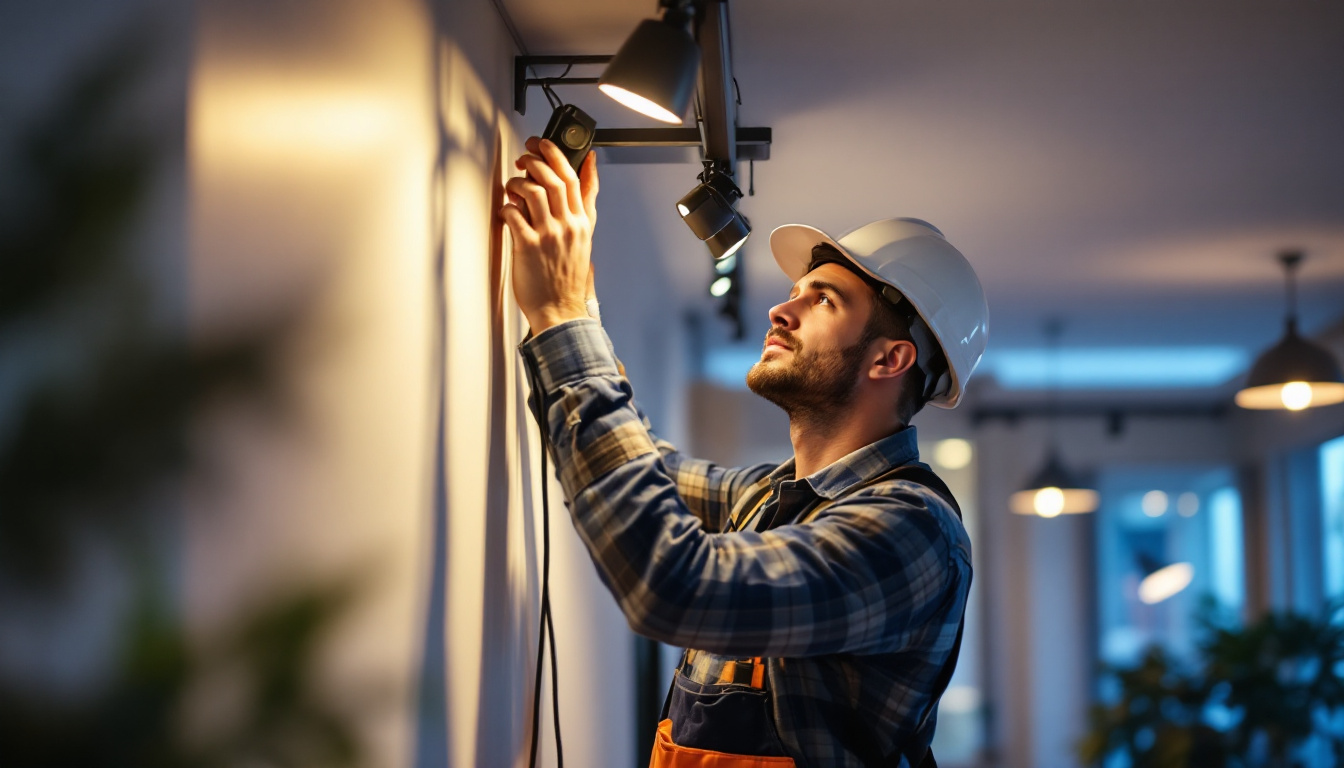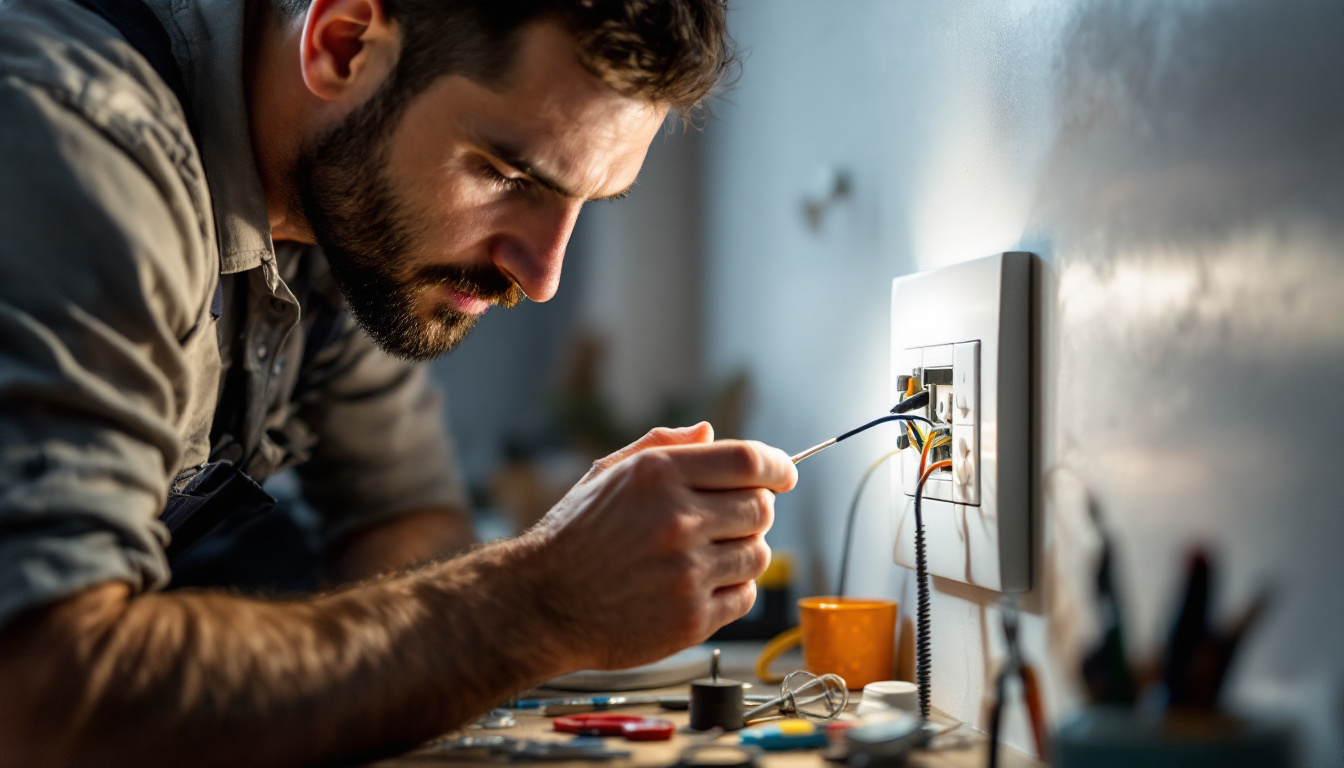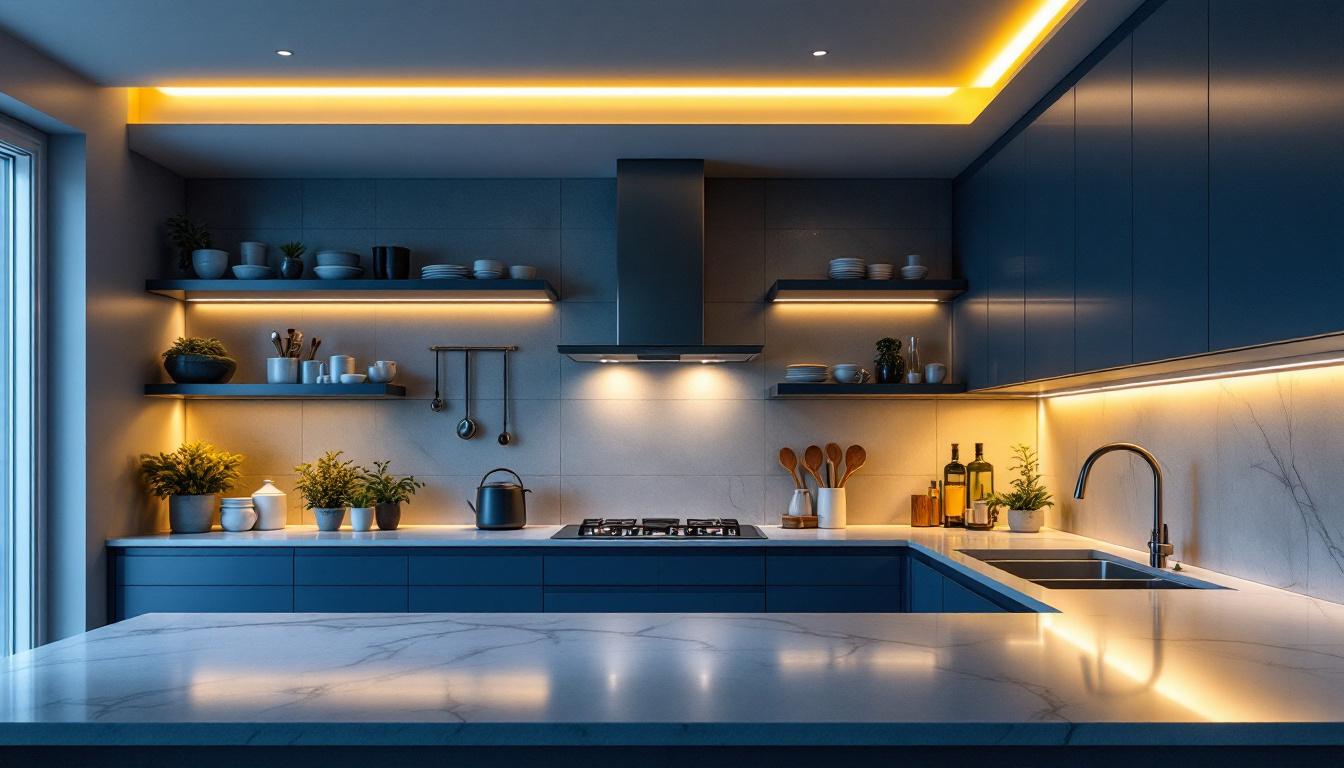
In the rapidly evolving world of lighting design, track LED systems have emerged as a versatile solution for both residential and commercial applications. These systems offer flexibility, efficiency, and aesthetic appeal, making them a popular choice among lighting contractors. However, to maximize their potential, it is essential to understand the intricacies of track LED lighting. This article provides key tips that can enhance the effectiveness of lighting contractors in utilizing track LED systems.
Track LED systems consist of a continuous track that allows for the mounting of various light fixtures. This flexibility enables contractors to adjust the positioning of lights according to specific needs and design preferences. Understanding the components and functionality of these systems is crucial for effective installation and design.
Track LED systems are composed of several key components, including the track itself, LED fixtures, and power supplies. The track is typically made of aluminum and can be surface-mounted or recessed into ceilings. The LED fixtures come in various styles, including spotlights, floodlights, and pendants, allowing for diverse lighting effects.
Power supplies are essential for converting standard voltage to the low voltage typically required by LED systems. Familiarity with these components will enable contractors to select the appropriate products for their projects, ensuring optimal performance and longevity. Additionally, many modern track LED systems feature integrated dimming capabilities, allowing users to adjust the brightness according to the ambiance desired. This feature not only enhances the functionality of the lighting but also contributes to energy savings, making track LED systems an eco-friendly choice.
There are primarily two types of track systems: single-circuit and dual-circuit. Single-circuit tracks allow for one circuit of power, meaning all fixtures on the track will operate simultaneously. In contrast, dual-circuit tracks enable two separate circuits, allowing for greater control over the lighting in a space.
Choosing the right type of track system depends on the specific requirements of the project. For instance, dual-circuit systems are ideal for spaces that require varying lighting levels or different lighting effects at different times of the day. Furthermore, the versatility of track systems extends beyond just functionality; they also serve as a design element. By selecting fixtures that complement the overall aesthetic of a room, designers can create a cohesive look that enhances the architectural features of the space. The ability to reposition lights easily also allows for seasonal adjustments, making track LED systems a practical choice for dynamic environments such as retail spaces or galleries.
Designing with track LED systems requires a thoughtful approach to ensure that the lighting enhances the overall aesthetic while meeting functional needs. Several factors should be taken into account during the design phase.
Before installation, it is crucial to assess the space where the track LED system will be implemented. Factors such as ceiling height, room size, and existing architectural features play a significant role in determining the placement and type of fixtures to use.
For instance, in a high-ceilinged space, longer track lengths and higher wattage fixtures may be necessary to achieve adequate illumination. Conversely, in smaller or lower-ceilinged areas, more compact fixtures can provide sufficient lighting without overwhelming the space. Additionally, the color of the walls and the type of furnishings can affect how light is perceived; lighter colors tend to reflect more light, while darker shades may absorb it, necessitating a more strategic lighting approach.
Establishing clear lighting goals is essential for effective design. Consider whether the primary purpose of the lighting is to provide general illumination, highlight specific areas, or create a particular ambiance. This will guide the selection of fixtures and their placement along the track.
Aesthetics also play a vital role in lighting design. Track LED systems can be integrated seamlessly into various design styles, from modern minimalism to rustic charm. Choosing fixtures that complement the overall decor will enhance the visual appeal of the space. Moreover, the finish of the track and fixtures—whether matte, glossy, or textured—can influence the overall look and feel. For example, a sleek, matte black track can impart a contemporary edge, while a brushed brass finish might evoke a more vintage or industrial vibe. Incorporating dimmable options can further enhance flexibility, allowing users to adjust the brightness according to the time of day or specific activities, thereby maximizing both functionality and aesthetic impact.
Proper installation is crucial for the performance and longevity of track LED systems. Adhering to best practices can help avoid common pitfalls and ensure a successful outcome.
Before beginning any installation, safety should be the top priority. Always turn off the power supply to the area where the installation will take place. Using appropriate personal protective equipment (PPE) and following local electrical codes is essential to prevent accidents and ensure compliance.
Additionally, it is advisable to work with a partner during installation, particularly when handling long tracks or heavy fixtures. This not only makes the process easier but also reduces the risk of injury. Having a second set of hands can assist in stabilizing fixtures while securing them, ensuring that everything is aligned correctly before tightening screws or connections. Furthermore, maintaining clear communication with your partner can help streamline the installation process, allowing for a more efficient workflow.
Each track LED system comes with specific manufacturer guidelines that must be followed during installation. These guidelines provide critical information on mounting techniques, wiring, and fixture compatibility. Ignoring these instructions can lead to suboptimal performance and may void warranties.
Contractors should take the time to read and understand these guidelines before commencing installation. This knowledge can save time and resources in the long run. Additionally, manufacturers often include troubleshooting tips and maintenance recommendations within their documentation, which can be invaluable for future reference. Familiarizing oneself with these resources not only enhances the installation process but also empowers the installer to address potential issues proactively, ensuring that the LED systems function at their best for years to come.
Track LED systems are known for their energy efficiency, which is a significant selling point for contractors. However, maximizing this efficiency requires an understanding of the technology and best practices.
When selecting LED fixtures for a track system, it is crucial to consider their energy ratings. Look for fixtures with high lumens per watt (lm/W) ratings, as these will provide more light output for less energy consumption. Additionally, consider the color temperature of the LEDs, as this can impact the mood and functionality of the space.
Contractors should also be aware of the importance of dimmable fixtures. These allow for greater control over energy consumption and can enhance the versatility of the lighting scheme.
Integrating smart technology into track LED systems can further enhance energy efficiency. Smart lighting controls, such as timers and motion sensors, can automatically adjust lighting levels based on occupancy and time of day. This not only conserves energy but also improves the user experience.
Contractors should consider recommending smart technology options to clients, as this can be a significant selling point and add value to the installation.
Regular maintenance is essential for ensuring the longevity and performance of track LED systems. Contractors should educate clients on the importance of routine checks and provide guidance on troubleshooting common issues.
Encouraging clients to perform routine checks on their track LED systems can help identify potential issues before they become significant problems. This includes inspecting fixtures for dust buildup, checking for loose connections, and ensuring that the track is free from obstructions.
Additionally, contractors should advise clients on the lifespan of their LED fixtures and when to consider replacements. While LEDs have a long lifespan, they may still require replacement after several years of use.
Contractors should be prepared to troubleshoot common issues that clients may encounter with their track LED systems. These can include flickering lights, uneven lighting, or complete fixture failure. Understanding the potential causes of these problems will enable contractors to provide effective solutions.
For instance, flickering lights may indicate a loose connection or incompatible dimmer switch, while uneven lighting can often be resolved by adjusting the positioning of fixtures along the track.
The lighting industry is continually evolving, with new technologies and design trends emerging regularly. For lighting contractors, staying updated with these trends is crucial for maintaining a competitive edge.
Participating in continuing education and training programs can significantly enhance a contractor’s knowledge and skills. Many organizations offer workshops, webinars, and certification courses focused on the latest advancements in lighting technology and design.
By investing in education, contractors can better serve their clients and offer innovative solutions that meet contemporary demands.
Networking with other lighting professionals can provide valuable insights into industry trends and best practices. Joining professional organizations, attending trade shows, and participating in local events can facilitate these connections.
Engaging with peers can lead to collaborations, referrals, and the sharing of knowledge that can benefit all parties involved.
Track LED systems offer a wealth of opportunities for lighting contractors to enhance their projects. By understanding the components, design considerations, installation best practices, and maintenance requirements, contractors can ensure successful implementations that meet client expectations.
Moreover, staying informed about industry trends and embracing energy-efficient solutions will position contractors as leaders in the field. With the right approach, track LED systems can transform spaces and elevate the quality of lighting design.
Ready to take your lighting projects to the next level? LumenWholesale is here to support you with a vast array of top-quality, spec-grade track LED systems and more, all at unbeatable wholesale prices. Say goodbye to local distributor markups and hello to superior lighting products that meet the highest industry standards. Plus, with free shipping on bulk orders, you can stock up on premium lighting solutions without worrying about hidden fees. Elevate your lighting designs with the perfect blend of quality, affordability, and convenience. Discover the best value in wholesale lighting by visiting LumenWholesale today.

Discover the frequent pitfalls lighting contractors encounter when installing lamp timer switches.

Discover how lighting contractors are transforming outdoor spaces with innovative pole lighting solutions.

Discover everything driveway lamps need to know—lighting tips, installation insights, and benefits for contractors.

Explore the rising trend of recessed lighting in kitchens and discover why it’s becoming a staple in modern home design.